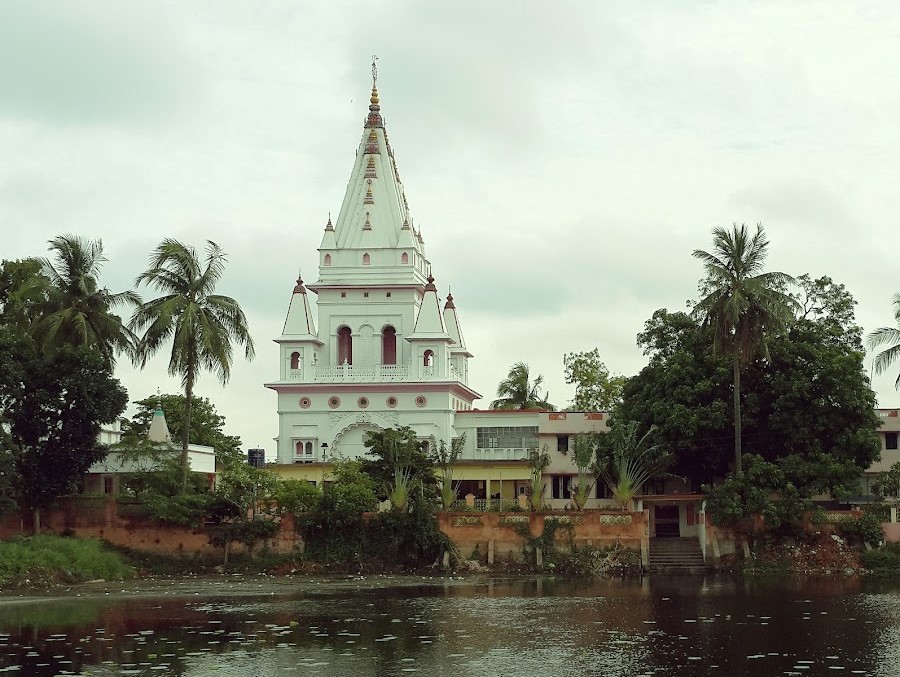
The temple at Yogapitha, established by Srila Bhaktivinoda Thakur
In 1887, when the Thakur was forty-nine years old, he began to reflect on his retirement. This was revealed in his autobiography:
I recovered fully from my head ailment, and I constantly studied the devotional literatures. Because of associating with devotees I became more renounced. I thought, ‘I have spent my days in a futile way. I have not accomplished much. I have not been able to obtain even a little taste of service to Sri Sri Sacicid-ananda-svarupa Radha-Krishna. Therefore, I will retire, and taking my pension I will find some little place in the groves of Vraja near the banks of the Yamuna and perform bhajan with my friend, Bhaktibrnga, until the end of my life.’
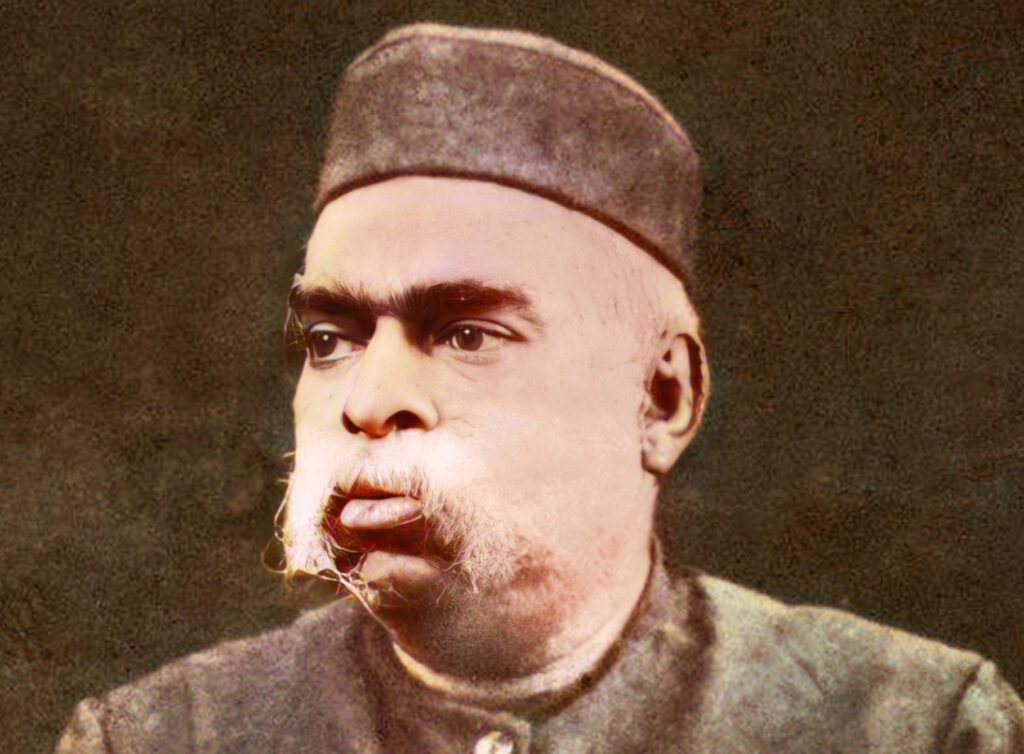
The Thakur approached his intimate friend, Sri Ramsevak Bhaktibrnga, for consultation, and they held some heartfelt discussions, following which the Thakur went to Tarakeswar to perform some government duties. While sleeping at Tarakeswar, Lord Chaitanya appeared to the Thakur in a dream and told him:
You will certainly go to Vrindavan, but first there is service you must perform in Navadvipa. What will you do about that?
Returning from Tarakeswar, he again consulted with his friend who advised him to transfer to Navadvipa-dhama. The Thakur approached Mr. Peacock requesting this transfer, but Mr. Peacock felt that a transfer so soon after coming to Srirampur would be improper, and the request was refused. The Thakur was filled with transcendental anxiety. He declined offers thereafter of personal assistantship to the Chief Commissioner of Assam and the office of the Minister of Tiperrah State, both offices carrying tremendous prestige and generous salary.
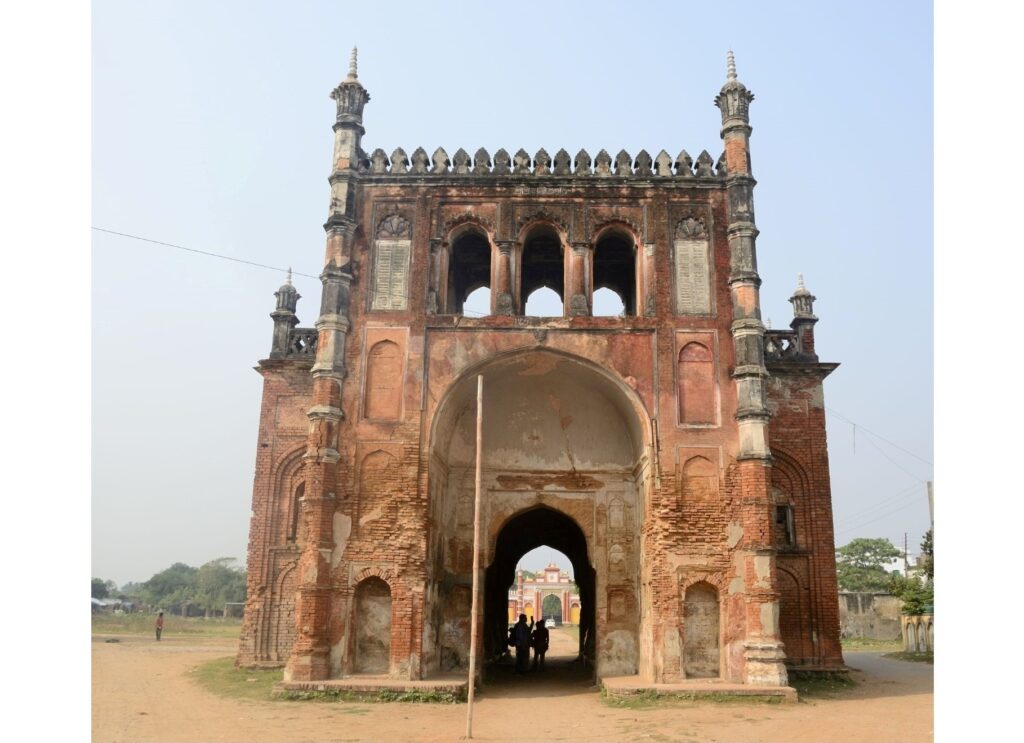
Gateway to Krishnanagar
The Thakur then submitted his application for retirement, but the application was not accepted. Finally he approached Babu Radha Madhava Vasu, who was the Deputy Magistrate of Krishnanagar, and worked out a mutual transfer with him – the Krishnanagar post for the Srirampur post. The town of Krishnanagar is the administrative headquarters of the Nadia district in West Bengal. It is situated about seven or eight miles east of Navadvipa. This proposal was submitted to the government and approved, with notification to this effect arriving on November 15, 1887. The Thakur was jubilant, but was soon overwhelmed by high fevers. He wrote:
How shall I speak of my misfortune? Returning home in joy, I became anxious because a horrible fever came on. It did not subside. Collector Toynbee arrived and expressed a desire to postpone my substitution. But then I thought, ‘I’ll live or I’ll die, but I will go to Krishnanagar.’
The Thakur received sick-leave and proceeded to Navadvipa.
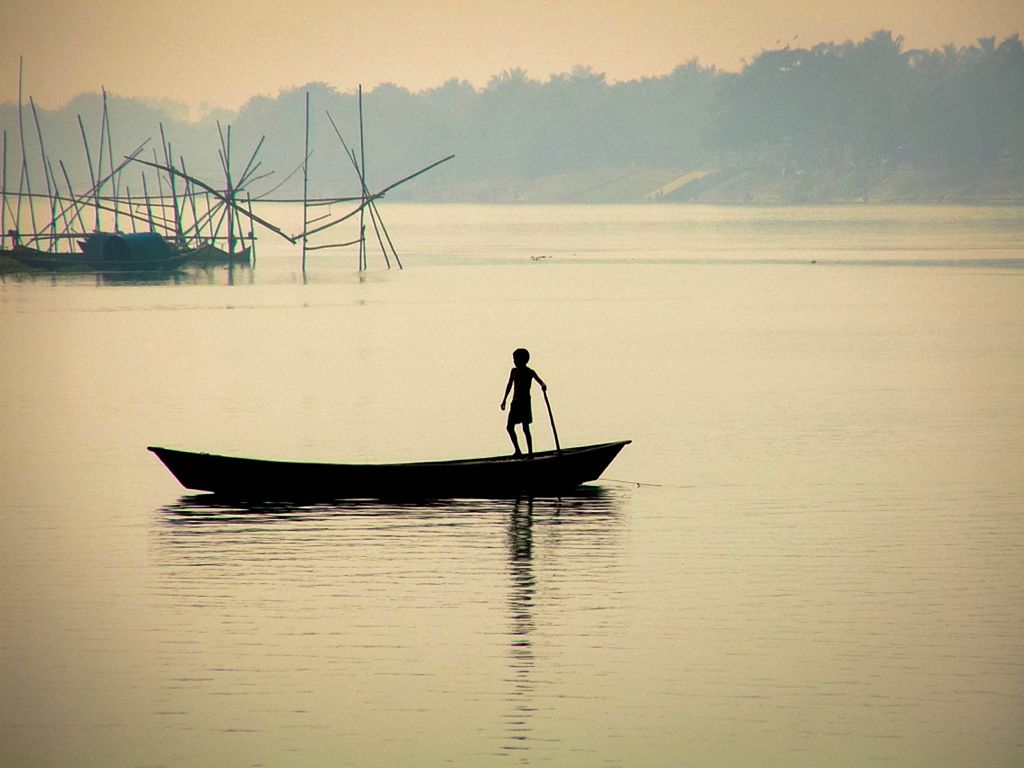
The Ganges at Mayapur
Thus in my bed-ridden condition I chose to go. My wife and Mahendra Mama went with me. There was a little difficulty on the way, but in the ecstasy of going to Navadvipa I felt untroubled.
The Thakur began to perform a few minor duties in Krishnanagar, but soon collapsed. A Doctor Russell informed him that if he did not take medicine and a proper convalescence diet he would die. The Thakur had taken only milk for forty-five days. The Thakur reflected:
From time to time I thought, ‘Many obstacles are a good sign.’
Doctor Russell prescribed quinine and other medicines, and advised that chapatis be eaten every day. During the Christmas break the Thakur took a train to Navadvipa with his wife. They proceeded to the Rani Dharmasala. (A dharmasala – “a house with fire” – is the name given to a place where pilgrims can rest while on a journey). This was a place where Gaurakishora Das Babaji used to spend much of his time doing bhajana. The Thakur arranged for an offering to be cooked for Lord Chaitanya.
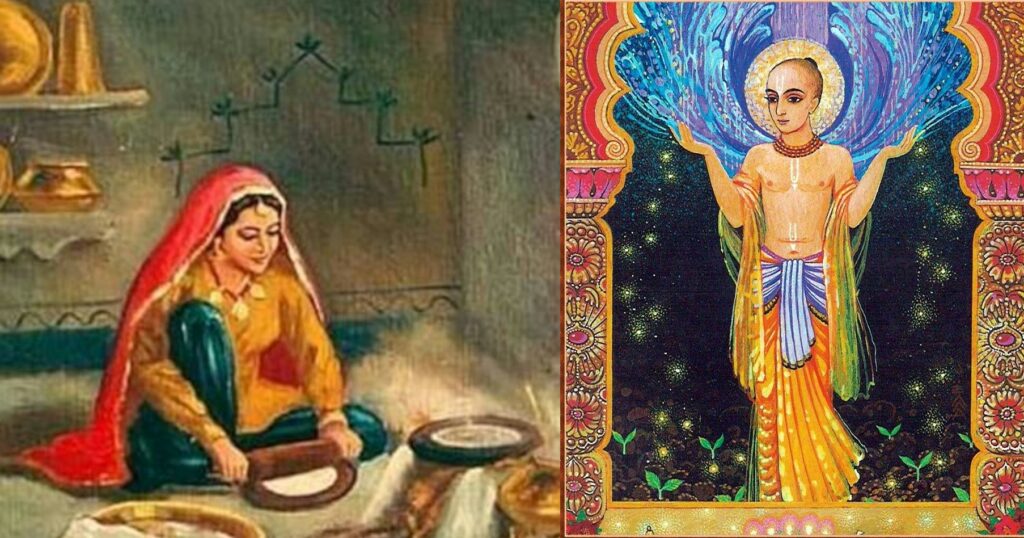
He then took grains for the first time in many days and commented:
Since my birth I had not eaten such nectarean food.
After this, the Thakur gradually regained his strength and began to come to Navadvipa every Saturday, in order to search out the the site of Sri Chaitanya Mahaprabhu’s birth. However, most of the local people had little interest in or actual knowledge of the holy sites of Navadvipa, and the Thakur became a little discouraged. Most of the local inhabitants expressed the opinion that the site of Lord Chaitanya’s birth was in the present town of Navadvipa, but the Thakur was not convinced. Another theory was that the actual site had been lost under the shifting path of the Ganges. The Thakur was determined to establish where the authentic birthplace was located.
Around this time, Srila Bhaktivinoda had a vision of a palace filled with light, termed the “Adbhuta Mandir,” on two consecutive occasions. About nine years later, in 1896, in a letter to his son Lalita Prasad, Bhaktivinoda detailed the experience of his vision of the Adbhuta Mandira and the events that led to the discovery of Lord Chaitanya’s birth site (Yogapitha) in Mayapura.
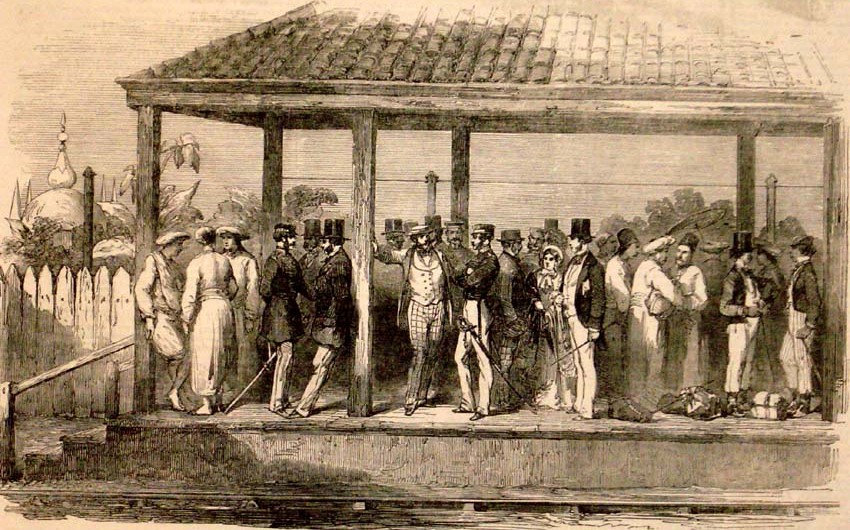
That segment of Bhaktivinoda’s letter follows:
During the Christmas break I took a train to Navadvipa with my wife. Arriving there and seeing the land in all four directions the hair on my body stood on end. Upon crossing the Ganga, I went to Rani Dharmasala and I made arrangements to cook for Sriman Mahaprabhu. Having taken darsana of the Lord with difficultly, I honored prasada at around 1 o’clock. After 45 days [of dieting], I took grains, jackfruit dahl, banana-flour sabji, and soup etc., which were like nectar. Since my very birth I had not eaten such nectarine food. Even Bimal [thirteen year old Bhaktisiddhanta Sarasvati] ate everything on his plate, and with great devotion.
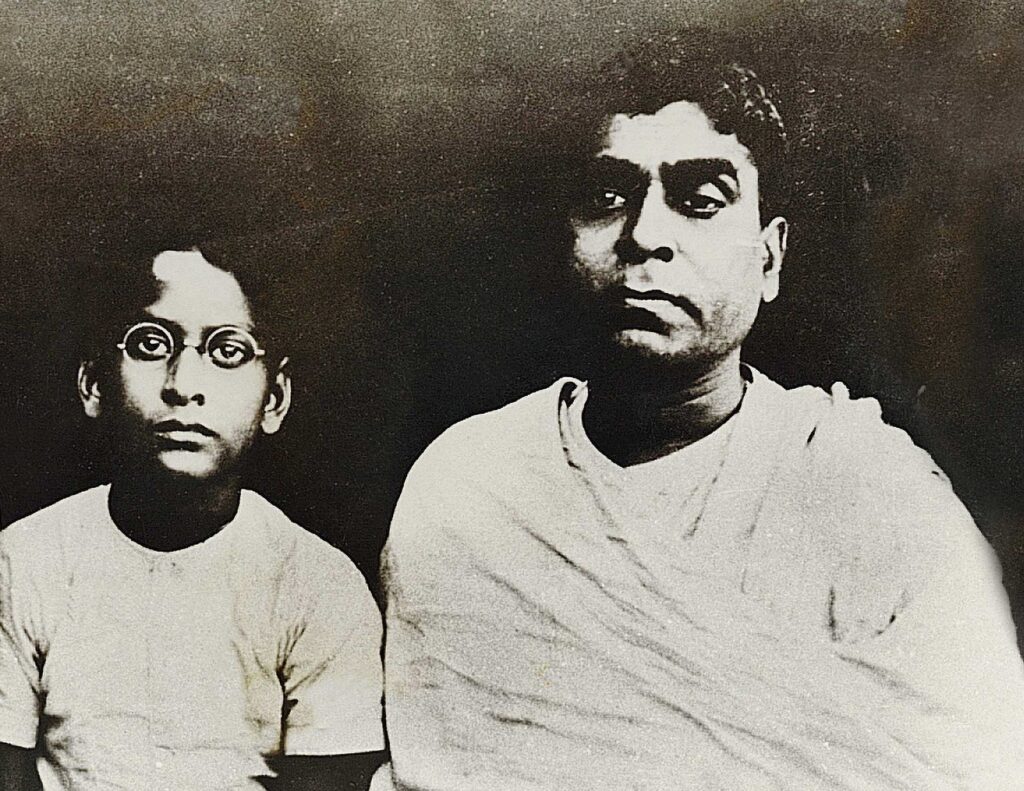
We had to go to the house at Krishnanagara before evening and thus, buying some cooking pots and utensils, and quickly crossing [the river] we took the train to Krishnanagara. The next day I went to Baro Gosvami’s house in Santipura, took prasada, and before evening returned home. At that time I was beginning to become strong. Every Saturday, I went to Navadvipa to search out the places of the lila of the Lord, but I did not find many and I was very unhappy. At the present time the people of Navadvipa only pay heed to their stomach etc. They do not make even a little effort in relation to the places of the lila of the Lord. One night, Kamala [his son] and a clerk and I went up on the roof in order to look around.
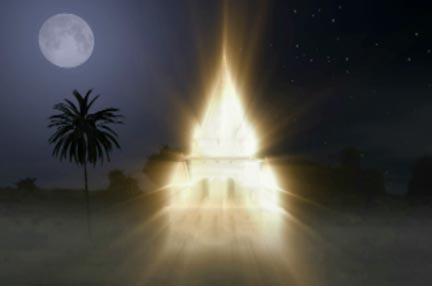
It was 10 o’clock, and was very dark and cloudy. Across the Ganga (Ganges), in a northern direction, I saw a large mansion flooded with light. I asked Kamala (if he saw it) and he said he had. I asked the clerk and he said, ‘I did not see anything.’ Because of that I was utterly amazed. In the morning I looked carefully at the place [where I saw the building] from the roof of the Rani Dharmasala, and I observed that there was one Tal [palm] tree in that location. When I asked others about this place they said that this distant place was known as Ballaldighi and that the remains of the fort etc. of Laksmana Sena were close by.
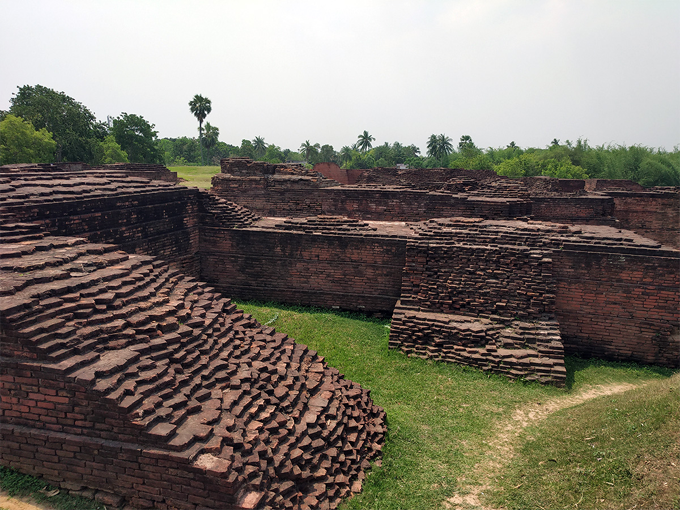
Ruins of the fort of Laksmana Sena, former Vaisnava King of Bengal
Srila Bhaktivedanta Swami mentions the Sena dynasty in a purport to Caitanya-caritamrta:
The celebrated ancient capital of the Sena dynasty, which was known as Gaudadesa or Gauda, was situated in what is now the modern district of Maldah. Later this capital was transferred to the ninth or central island on the western side of the Ganges at Navadvipa, which is now known as Mayapur and was then called Gaudapura. Lord Chaitanya appeared there, and Lord Nityananda came there and joined Him from the district of Birbhum. They appeared on the horizon of Gaudadesa to spread the science of Krishna consciousness, and it is predicted that as the sun and moon gradually move west, the movement They began five hundred years ago will come to the Western civilizations by Their mercy.
[Purport Caitanya-caritamrta Adi 1:102]
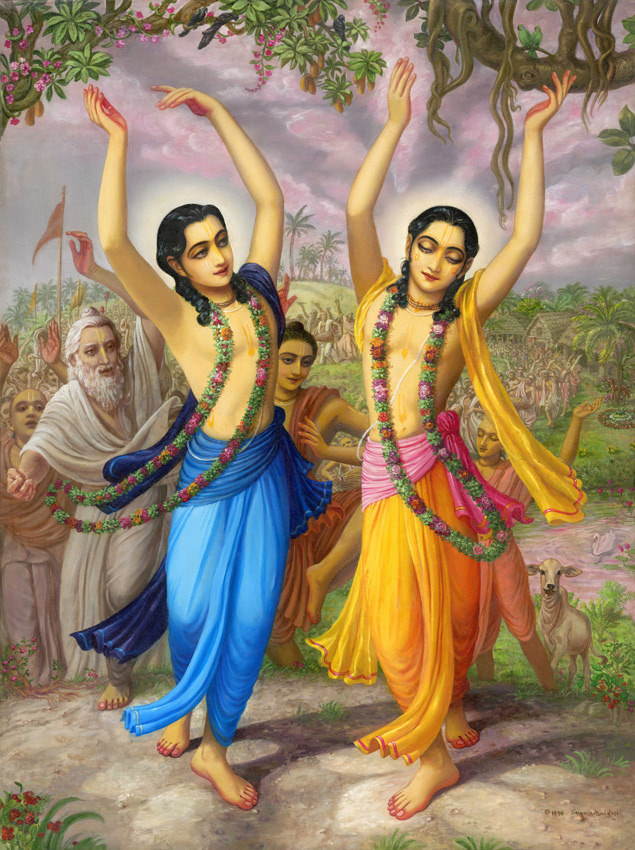
The Thakur continues in his autobiography:
That Monday I returned to Krishnanagar and the following Saturday I went back to Ballaldighi. I saw that wonderful phenomenon in that place again at night, and the next day I went to see the area on foot. Upon inquiring of the elderly people of that place, I was informed that this was the birthplace of Sriman Mahaprabhu. I gradually saw everything (in the area) and ascertained where all the small villages mentioned in the ‘Caitanya-bhagavata’ and in Narahari Thakura’s ‘Bhakti-ratnakara’ and ‘Parikrama Paddhati’ were.
The next day, he wandered around the site, and the elderly locals told him that this was indeed the Janmastan (birthplace) of Sri Krishna Chaitanya Mahaprabhu, called the Yogapitha – the place where the Lord connects Himself, or descends, to this earth. The locals pointed out an extensive mound [a small hillock] covered with Tulasi plants which had not been planted, as the actual site of Lord Chaitanya’s appearance. In order to substantiate his growing conviction that this was indeed the Yogapitha of Lord Chaitanya, the Thakur began to conduct an investigation utilizing old manuscripts of the Caitanya-bhagavat, Bhakti-ratnakara and Navadvipa-parikrama-paddhati, as well as antique maps of the district.
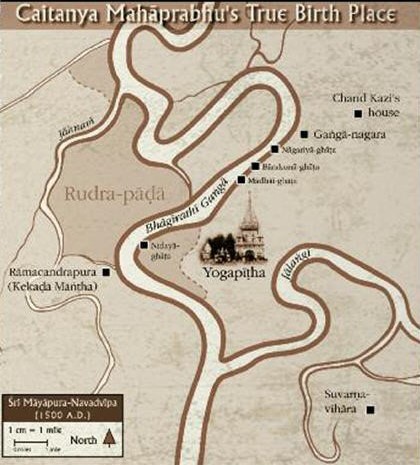
In particular, he found an old map from the time of Ganga-Govinda Singh who was the “Naib Diwan of the Khalsa” (the Deputy Treasurer of the revenue department of the Muslim government of Bengal) during the eighteenth century. The name “Sri Mayapur” was found on the map to indicate the site of what was then (in the late 1880’s) called Ballaldighi. He ascertained a good deal about the different villages of the area from his research with the manuscripts and maps and from the local villagers as well.
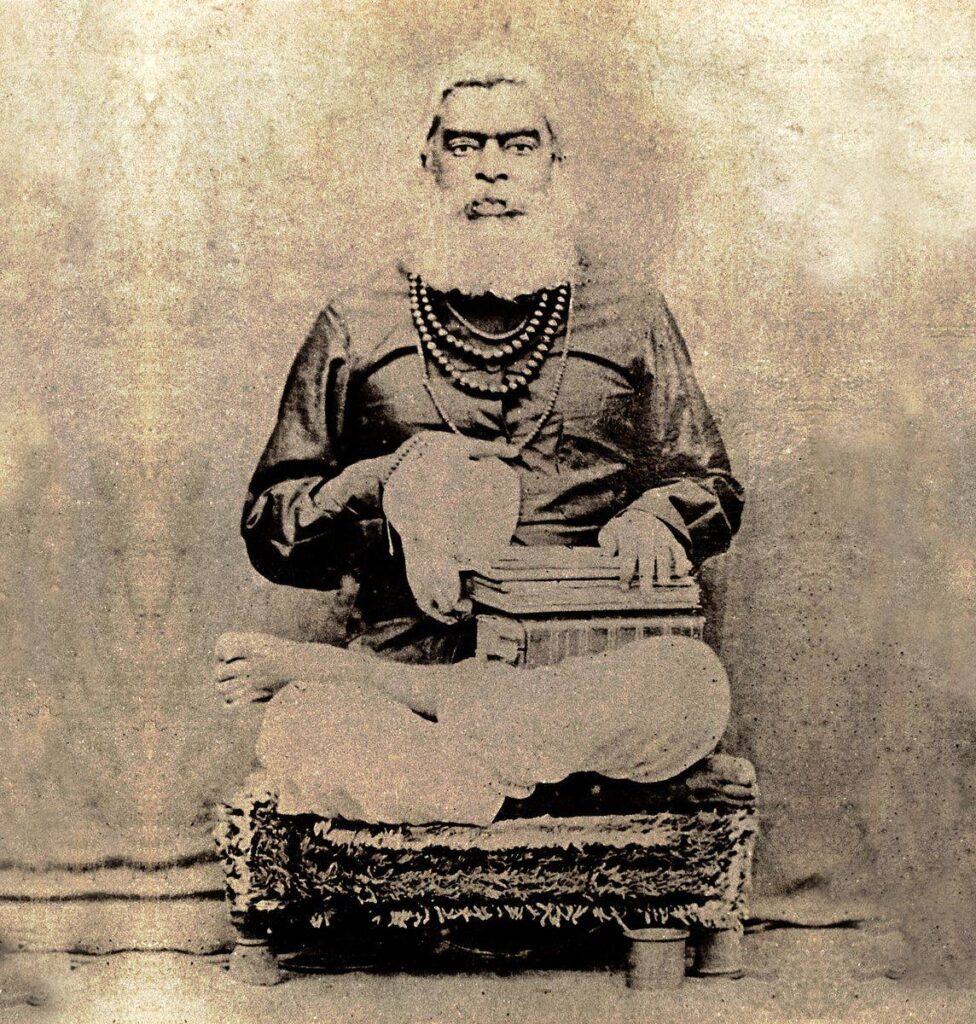
During the many changes in the course of flow of the mighty Ganges River, some parts of the sacred dhama of Navadvipa had changed. The Ganges had revealed old and lost places and reclaimed new ones. The Thakur found to his great atonishment that the town on the western banks of the Ganges, now called “Navadvipa,” was actually a place of less than one-hundred years standing, and that there were still people living there who declared that in their youth they had moved to the new town from the old site at Ballaldighi, on the eastern side of the Ganges. He also found that this “new” town of Navadvipa could not possibly be the site of Lord Chaitanya’s appearance, because Lord Chaitanya had appeared on the eastern bank of the Ganges. Furthermore, the elderly villagers of Ballaldigni even called the area Mayapur. Then, while reading the Bhakti-Ratnakara, the Thakur found the following verse:
In the center of Navadvipa there is a place called Mayapur. At this place the Supreme Lord, Gauracandra, took His birth.
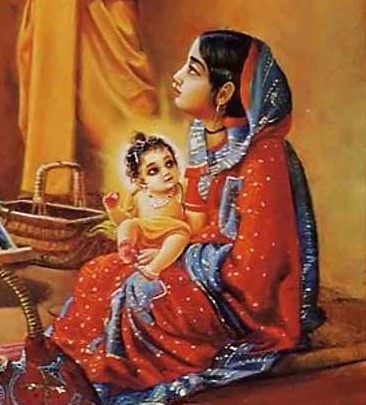
This discovery, which took place in late 1887 or early 1888, was a landmark event in the history of Vaisnavism. The site of Lord Chaitanya’s divine appearance had again been revealed to the world, after being lost for several generations. Wishing for a final sign of confirmation, the Thakur requested Srila Jagannath das Babaji Maharaj, the head of the Gaudiya Vaisnava community, to come to the site.
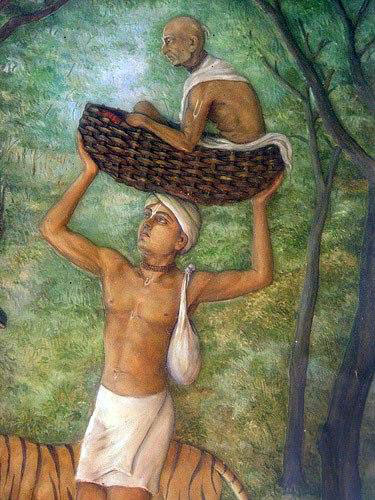
The aged babaji, who was more than 120 years old at that time, was so weak that he was carried everywhre in a basket by his disciple, Bihari. Jagannath das was so old that his eyelids completely covered his eyes, and had to be propped open with his hand if he wanted to see someone. Many curious persons accompanied him. When he was brought to the site discovered by the Thakur, he became overwhelmed with ecstasy and jumped into the air, crying:
Ei to’ nimai-janma-bhumi! – This is indeed the birth place of Lord Nimai!
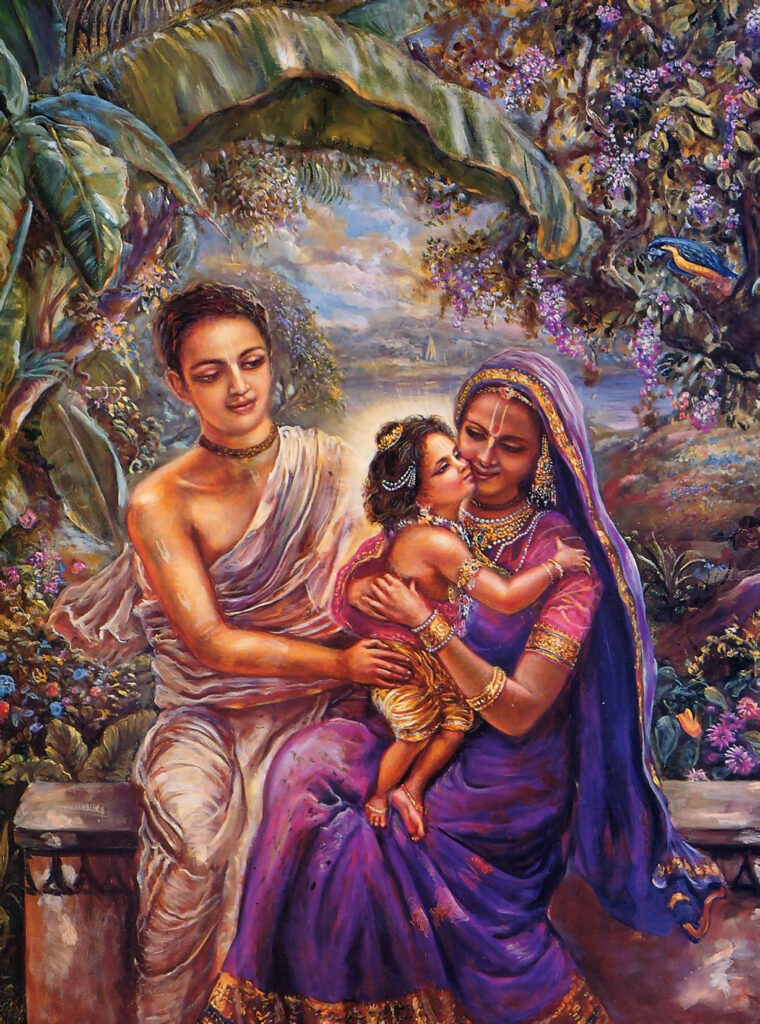
Babaji Maharaj got out of the basket and began to dance madly, singing the names of Gaurahari. Everyone was amazed to see the old babaji dancing in this way. Through his divine vision, Jagannath Das Babaji Maharaj confirmed the site of Mahaprabhu’s birth, and then later pointed out the site of the breaking of the mridanga drum by the officers of Chand Kazi. Therefore, the result of much academic research was spiritually confirmed, and the place of Lord Chaitanya’s birth was thus rediscovered.
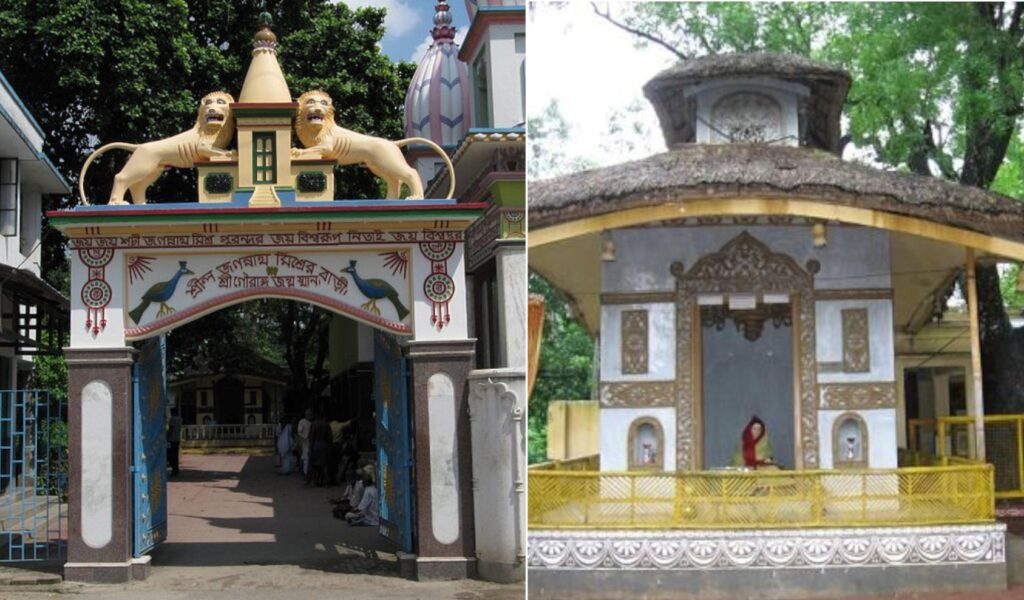
The site of Lord Chaitanya’s birth, beneath the neem tree from which He received the name Nimai
This monumental event took place toward the beginning of 1888, and it was a landmark event in Gaudiya Vaisnava history. Just as Srila Rupa Goswami and Srila Sanatan Goswami excavated the lost sites of Krishna’s pastimes in Vrindavan, Srila Bhaktivinoda Thakur discovered the lost site of Lord Chaitanya’s birth. This discovery led to his undertaking further research, and he eventually discovered many of the sites of Lord Chaitanya’s pastimes and described them in his book Sri Navadvipa Dhama Mahatmya, which he wrote in Krishnanagar and published in 1890.
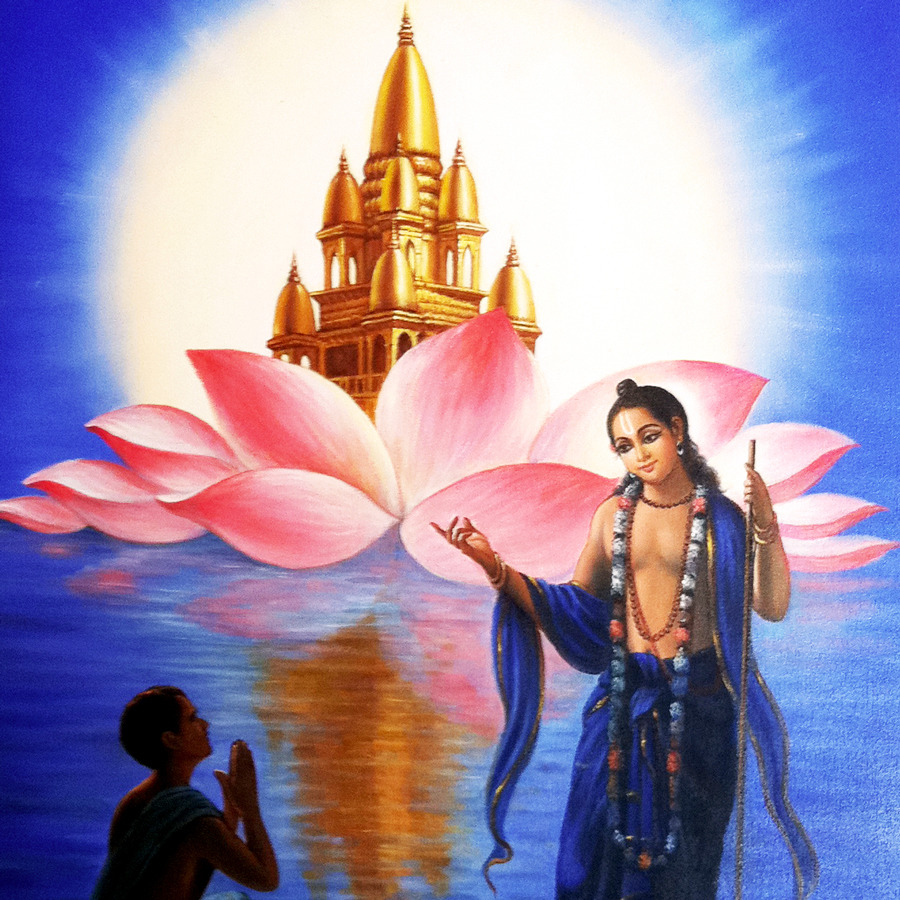
Revealing the glories of Antardvipa, in chapter five of Navadvipa Dhama Mahatmaya, Srila Thakur Bhaktivinoda quotes Lord Nityananda’s amazing words to Srila Jiva Goswami:
Listen to My words. Navadvipa extends over sixteen krosas. Within the sixteen krosas of Navadvipa, which are non-different from Vrindavan, there are nine islands, which form an eight-petaled lotus floating on the water. In the middle of the eight islands, or petals, lies Antardvipa. And within Antardvipa, lies the very central point, Mayapur. The eternal pastimes of Lord Chaitanya take place within Yogapith and the circle of Mayapur, the circumference of which measures three and a half miles and the diameter measures just over one mile. Because the Pancha-tattva are seated at the Yogapith, it is the most glorious of all places.
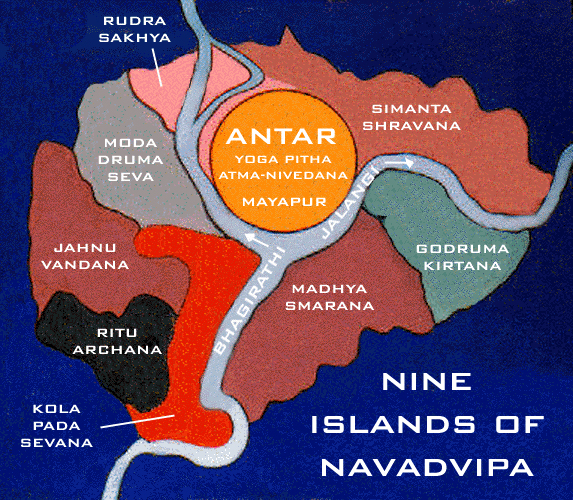
Very soon, by the desire of the Lord, this will be nearly hidden under the waters of the Ganges. Then later, by the powerful desire of the Lord, the dhama will again be revealed and shine effulgently. The eternal dhama is never really lost but is temporarily covered, and then again it appears to our eyes. My worshipable Lord eternally resides at Mayapur, situated on the east bank of the Ganges. Although in the eyes of common people, Vishvambhar (Lord Chaitanya) took sannyas and left Navadvipa to go elsewhere, actually My Gauranga never gives up Mayapur or Navadvipa. The devotees can perceive His daily lila. You, Jiva, will also see Gauranga dancing.
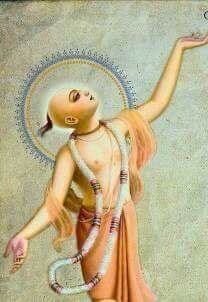


2 Comments
Very nice
The ultimate treasure hunt! Riveting. Thank you Kenaram.